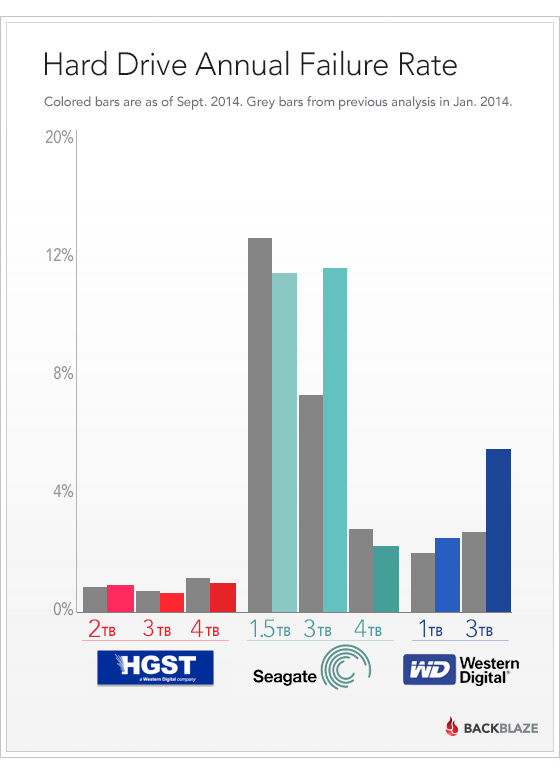Backing Up Your Data
If you only have a single copy of your data, you’re vulnerable to losing it. A hardware failure or theft can lead to losing hundreds of hours of work or irreplacable photos.
“Don’t worry— I have a Time Machine backup," I hear you say. Having a Time Machine backup is a good first step, however, you’re still at risk in cases where you lose both copies in a house fire or if both your laptop and Time Machine hard drive are stolen.
Hard disk drives are also prone to failure.

Hard Drive Failure Rates by Model
One solution is to store a copy of your data remotely in the cloud. Storage services will also have redundancy measures in place to avoid data loss when hard drives inevitably fail.
A good rule to follow is the 3-2-1 rule for backing up your data.
The 3-2-1 rule for backup goes as follows:
- Have at least three copies of your data
- Use at least two different types of media for your copies
- At least one of your copies should be offsite
Backing up your experimental data
Following the 3-2-1 rule, your sequencing data for your study should have at least three copies. A typical case would be:
- one copy on a external hard drive stored in the lab
- one copy on the volume attached to the server where you’re doing your analysis
- one copy in Mediaflux labeled with appropriate metadata
Cloud-based automated backup services
Having a remote backup for your computer is also a good idea. Services such as Backblaze can automatically backup your computer, but they also have a monthly subscription fee at around $5 a month.
An example of using the 3-2-1 rule for backing up your laptop would be:
- one copy on the SSD in your laptop
- one copy on a HDD with Time Machine backups
- one copy in the cloud using a cloud backup service such as Backblaze